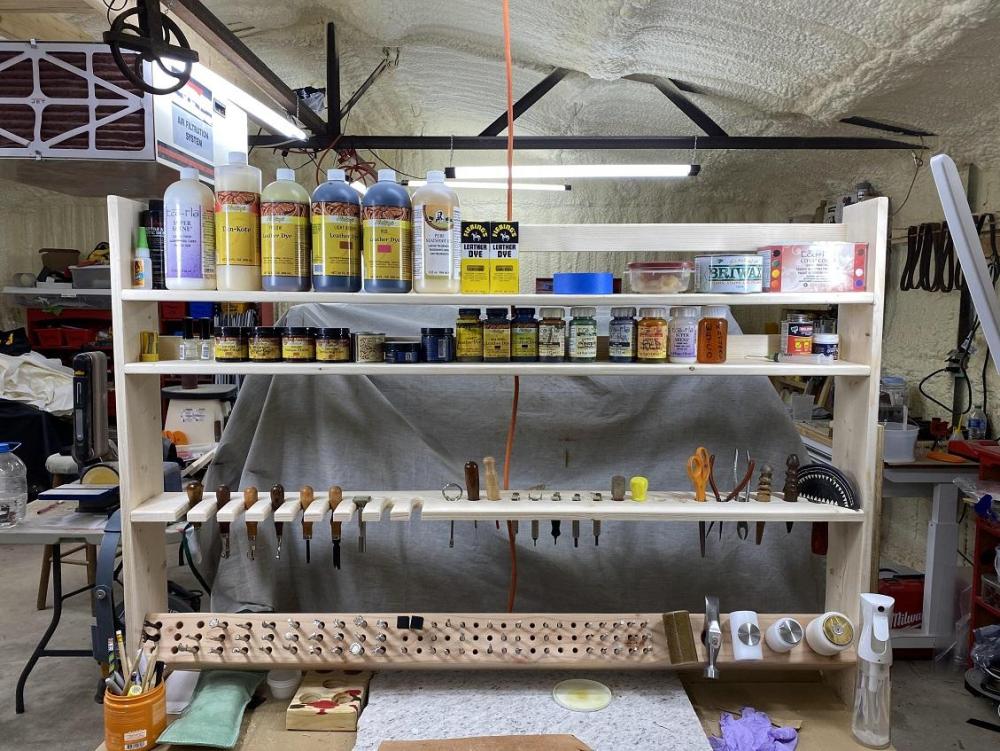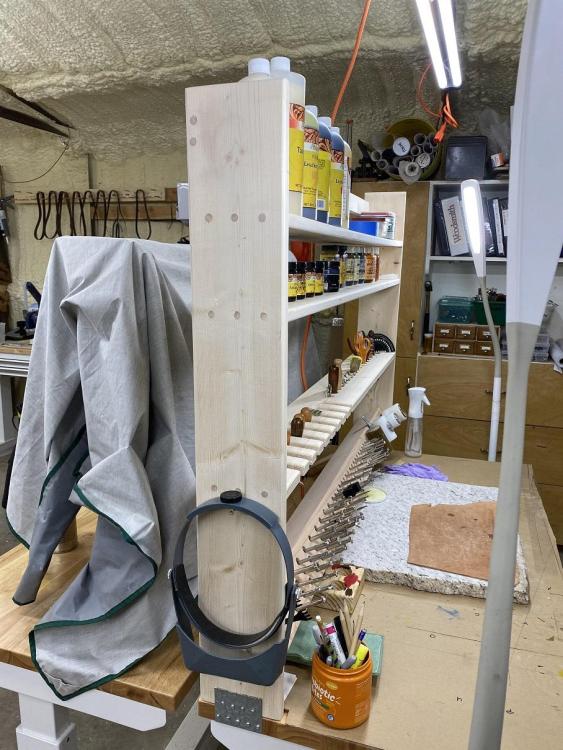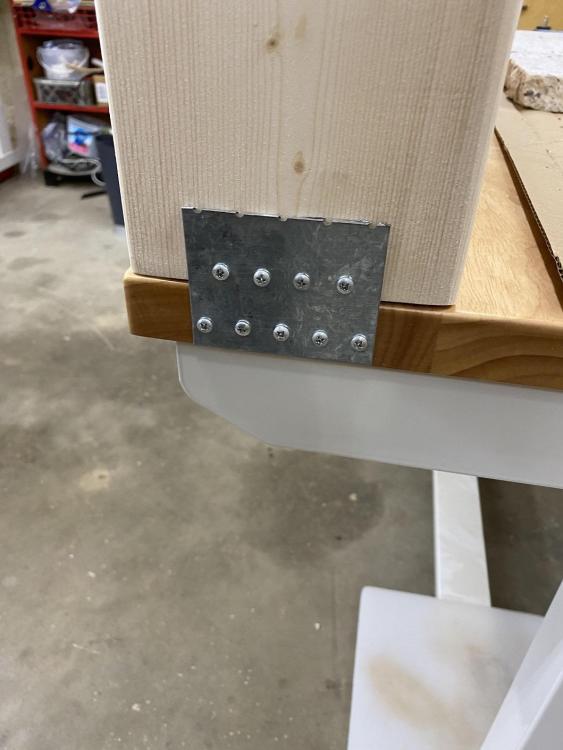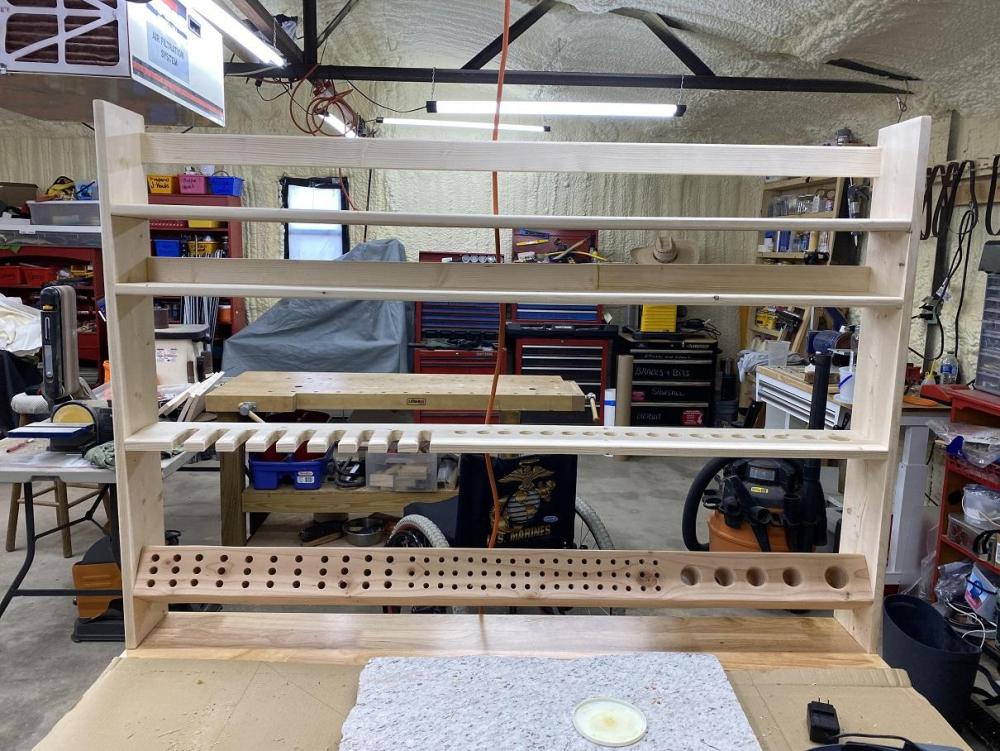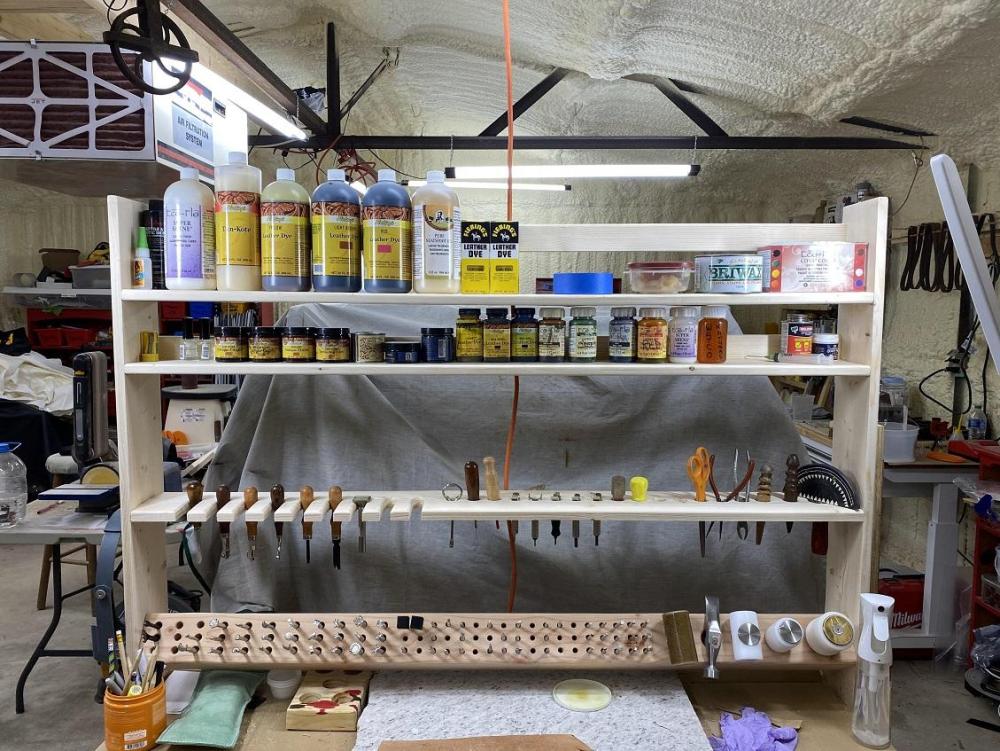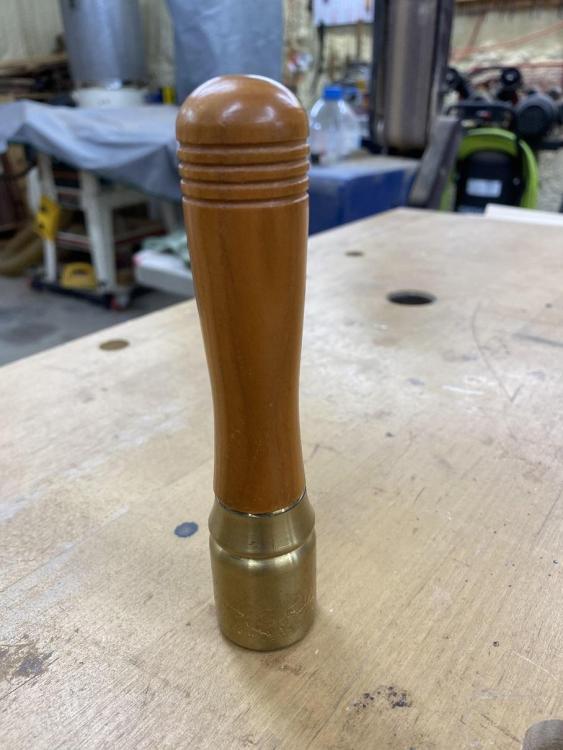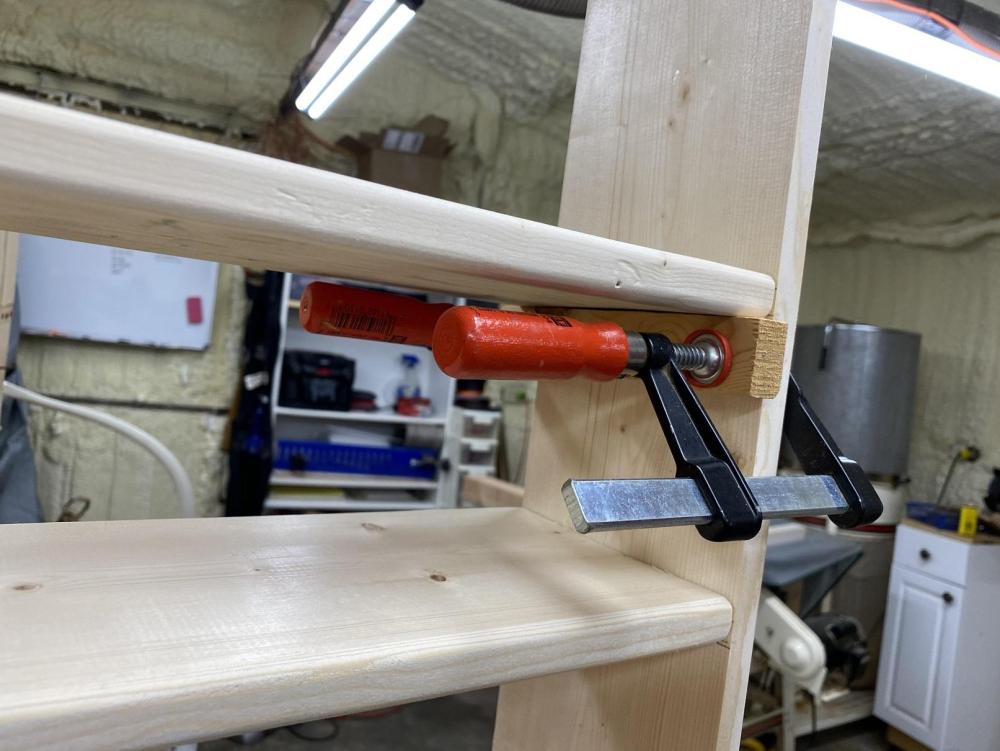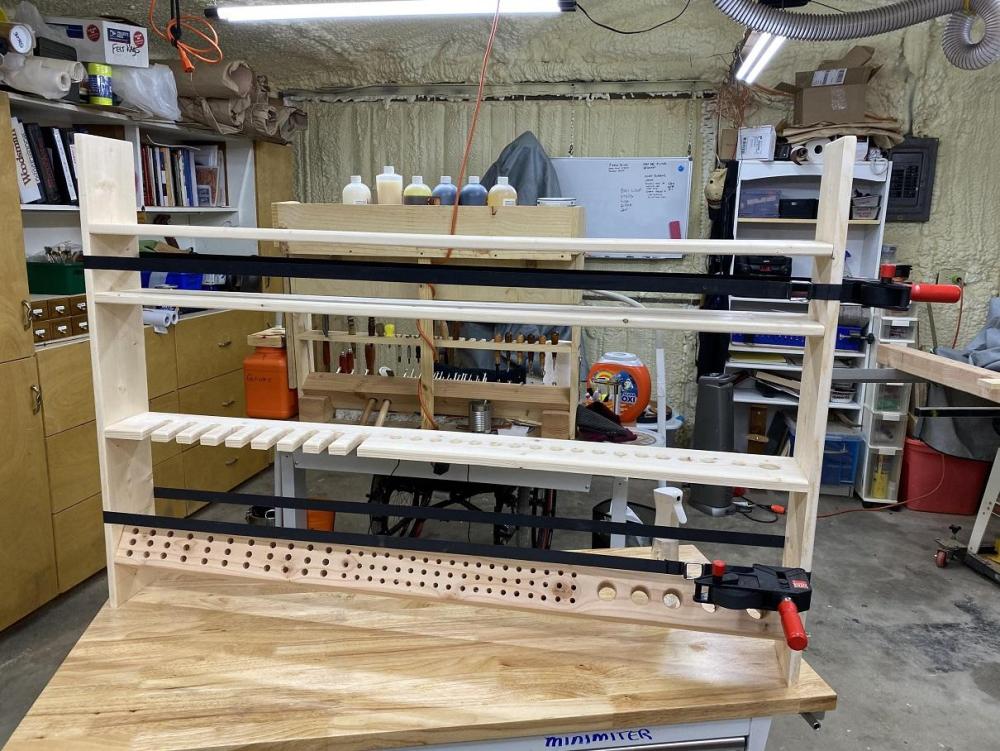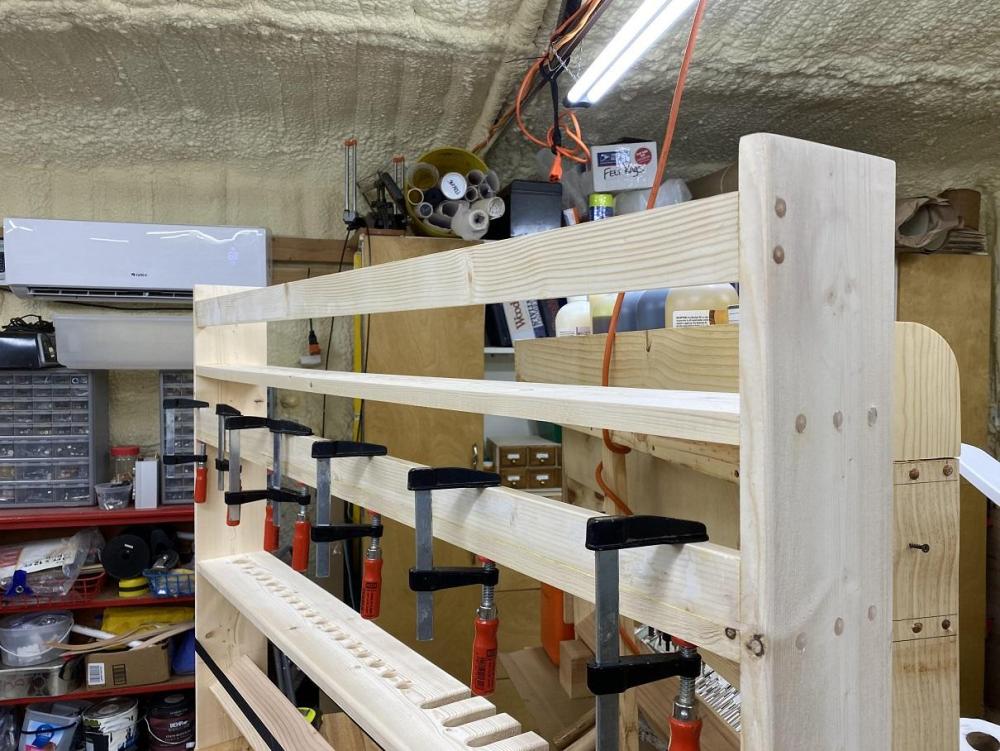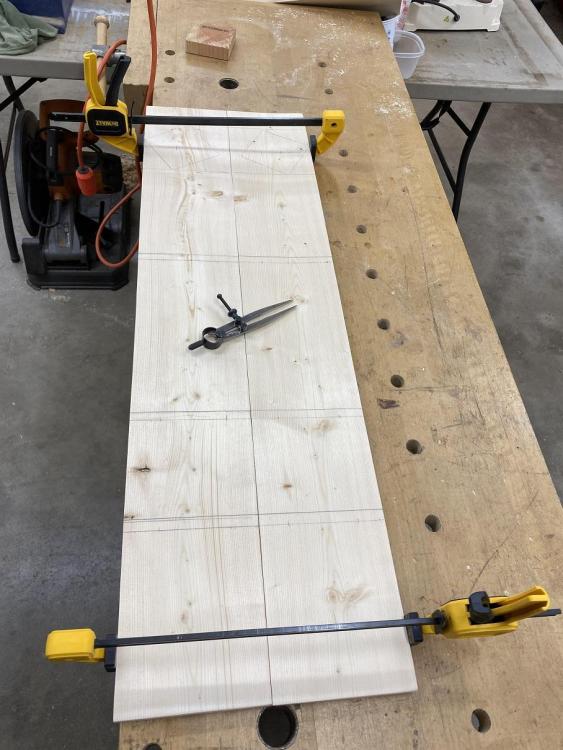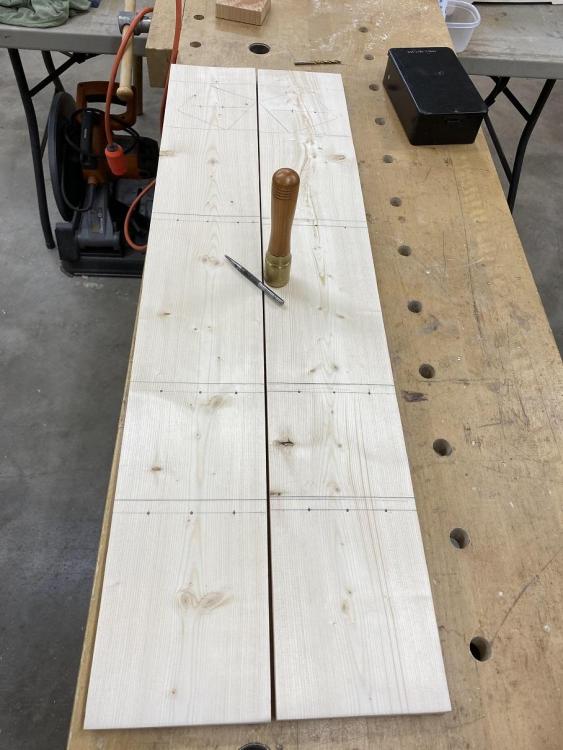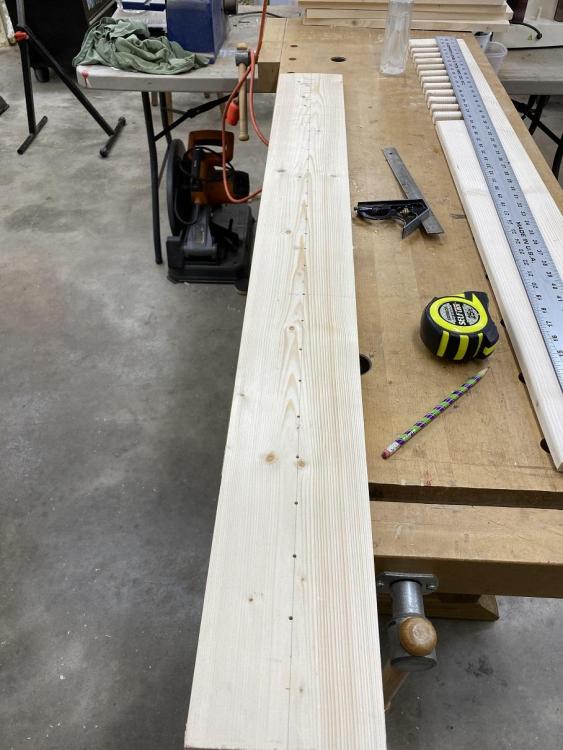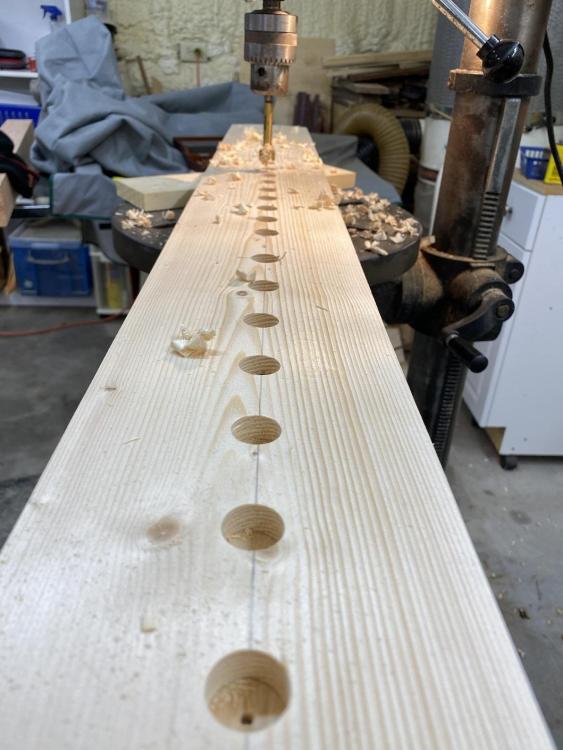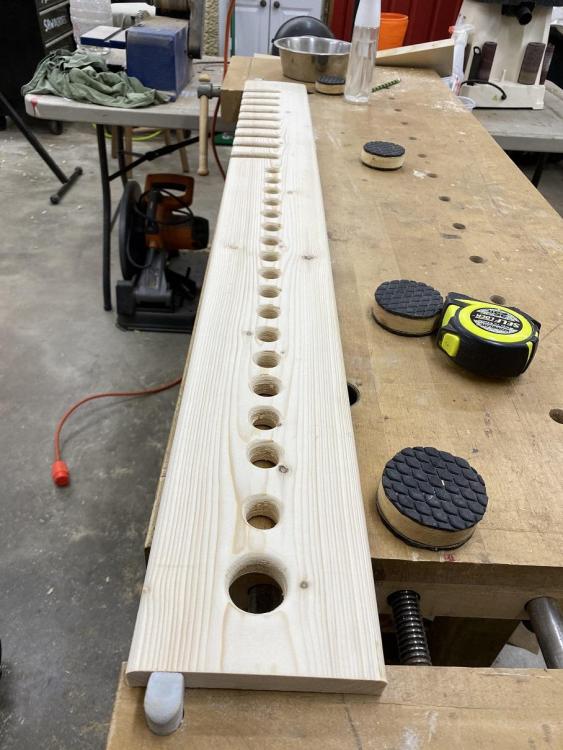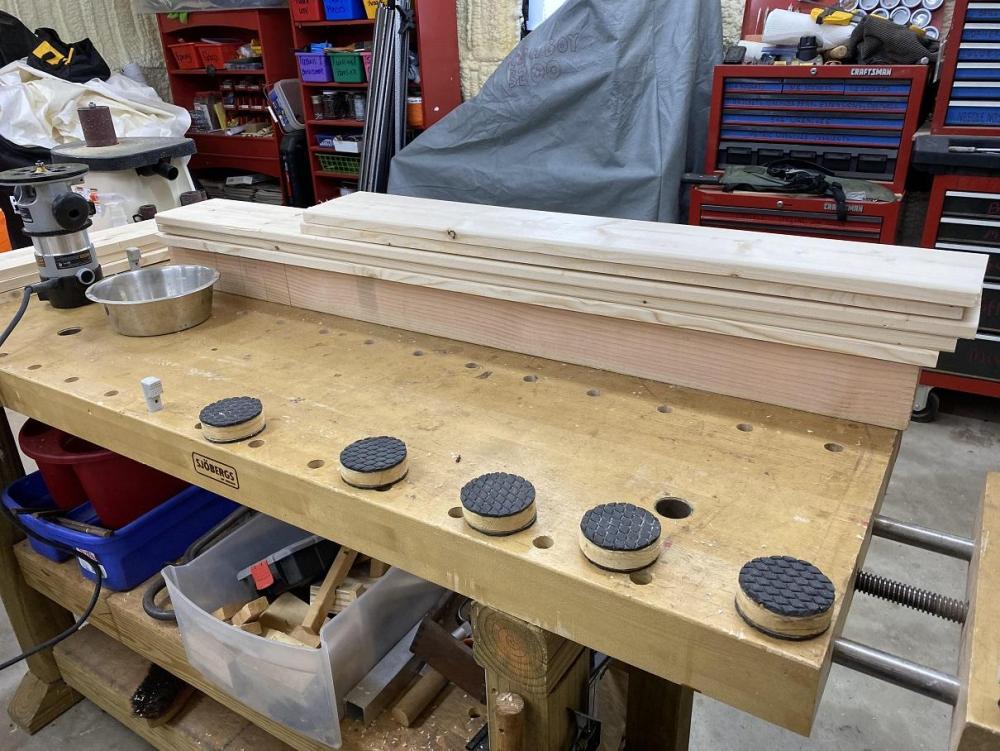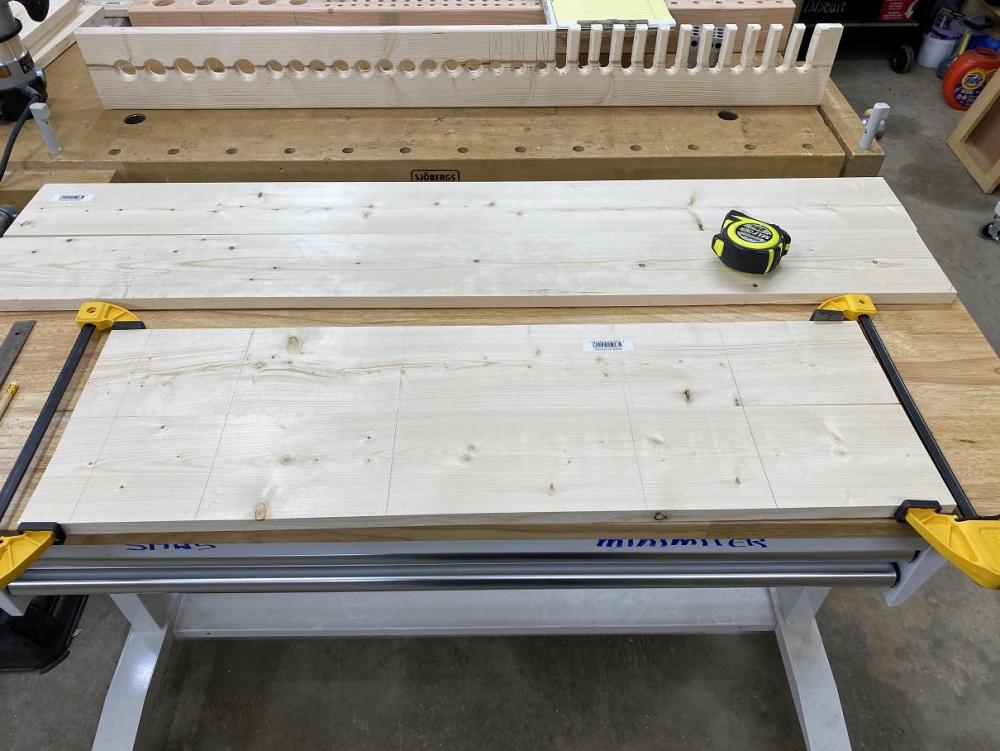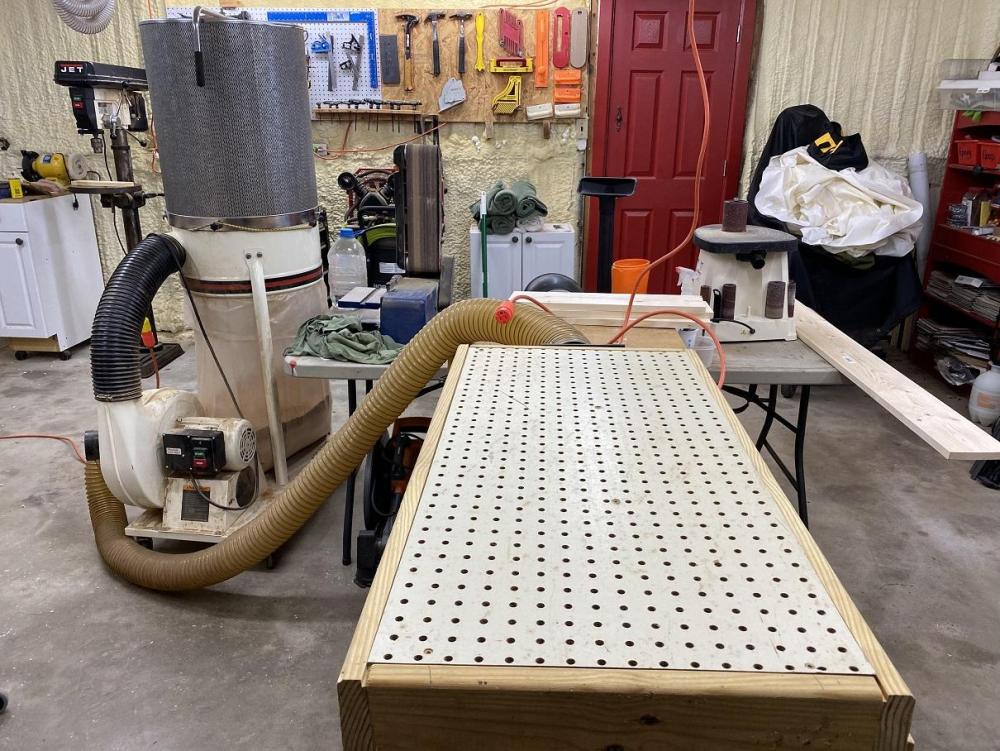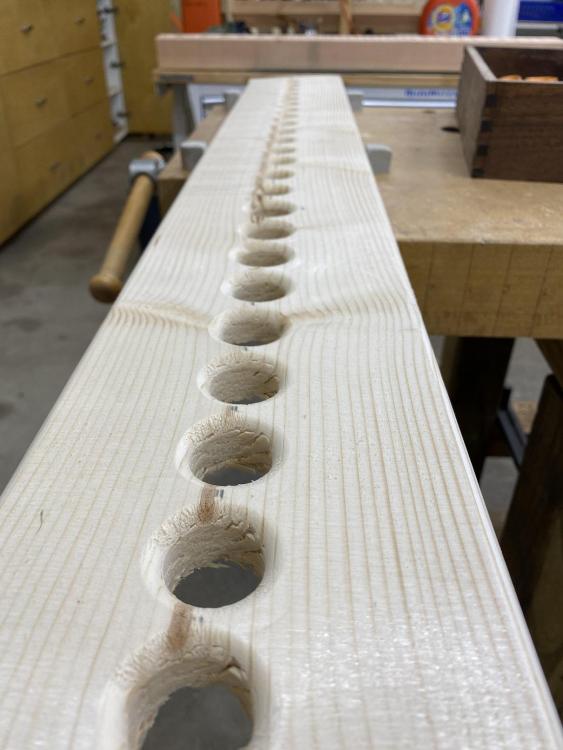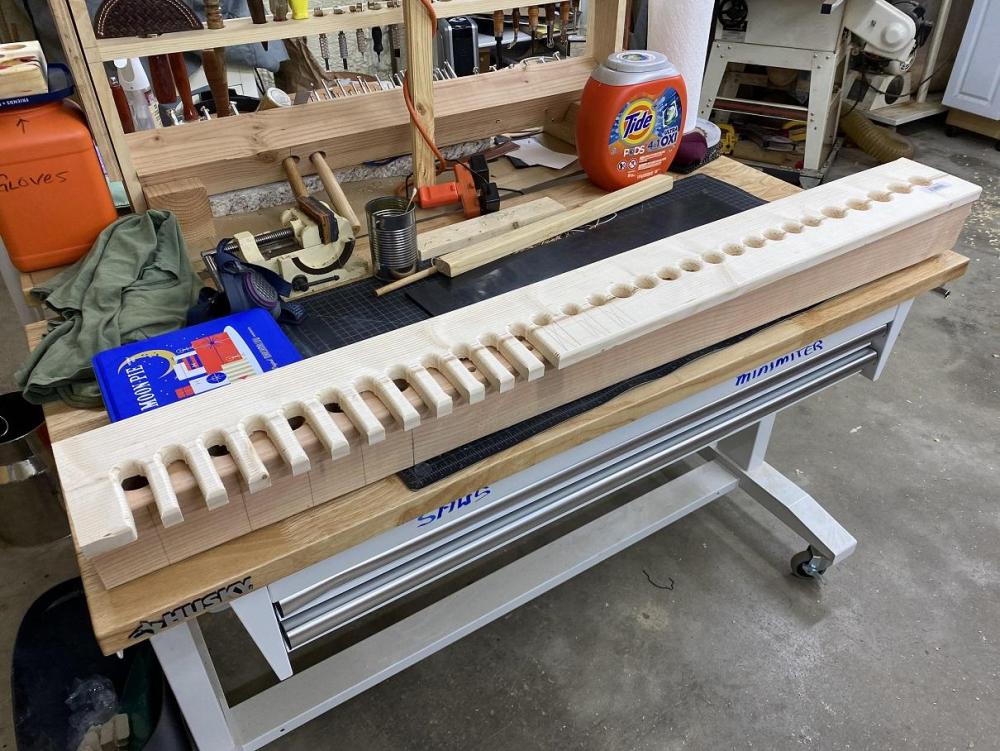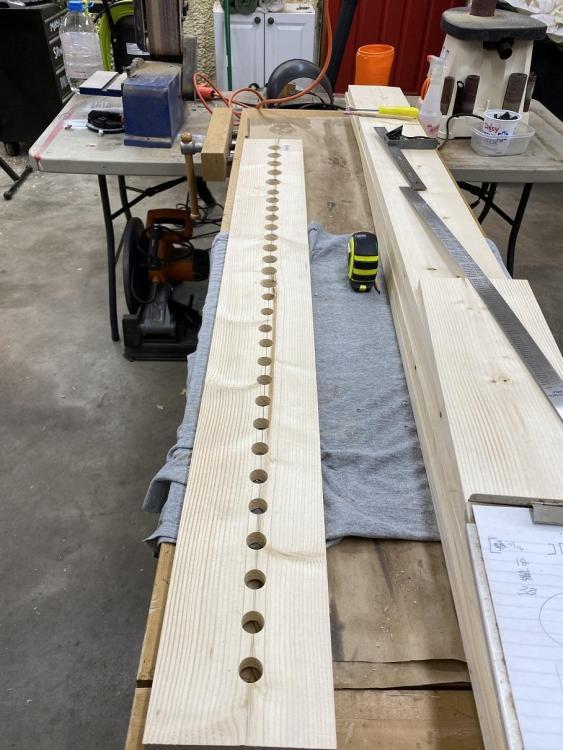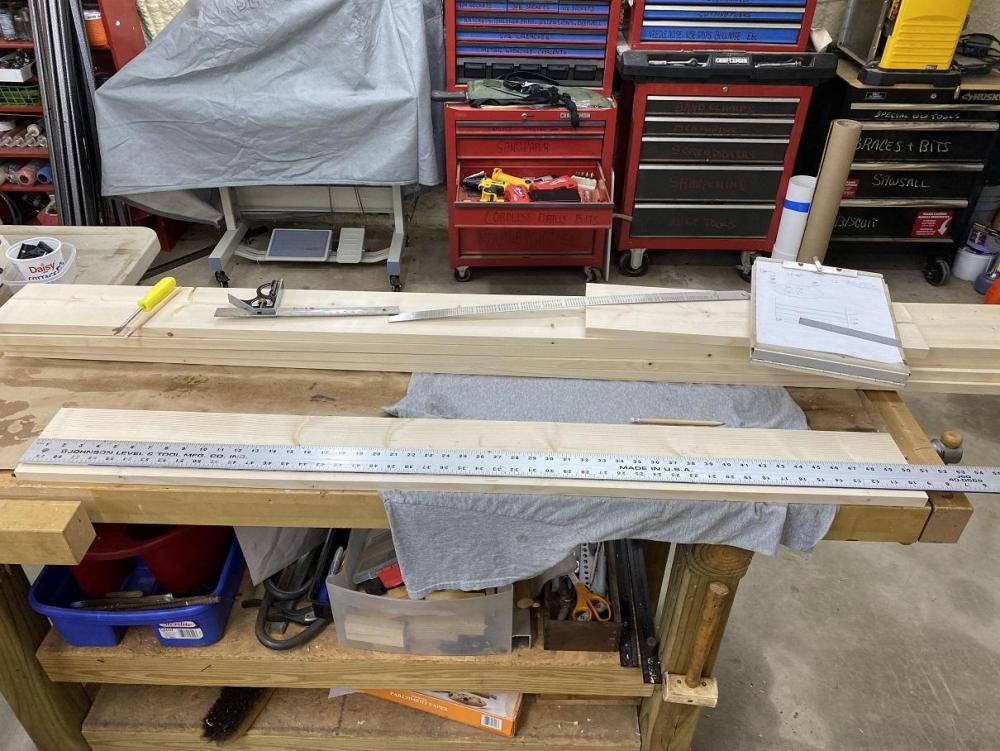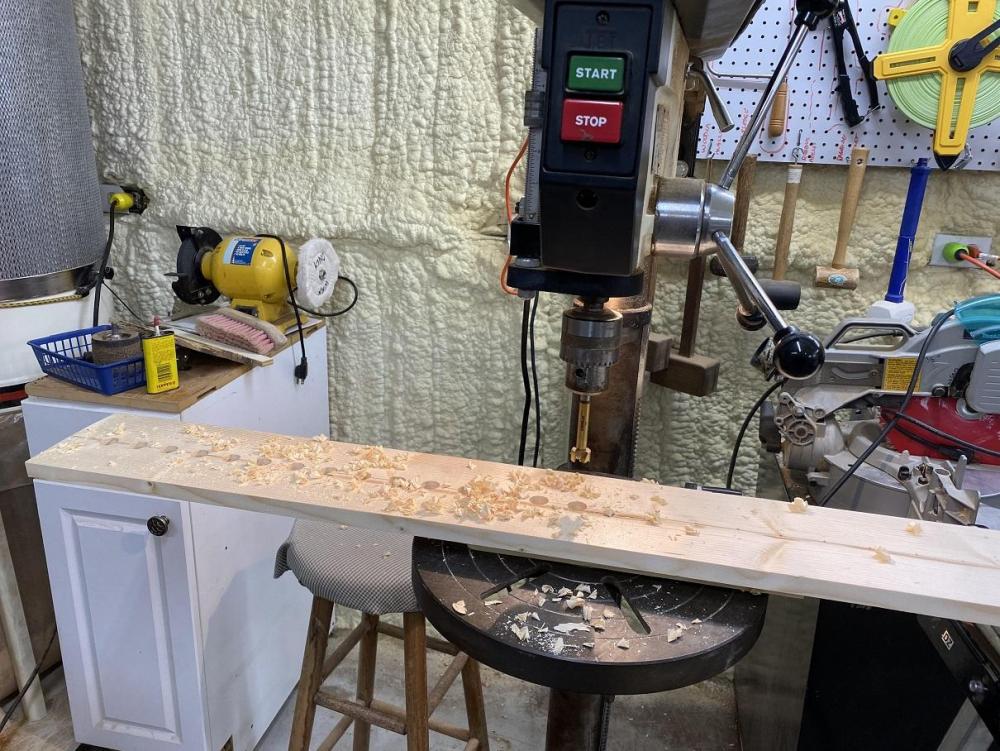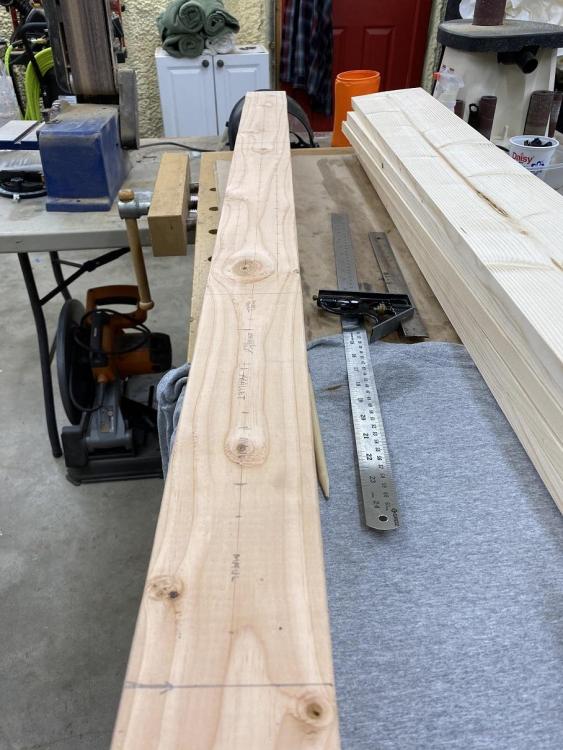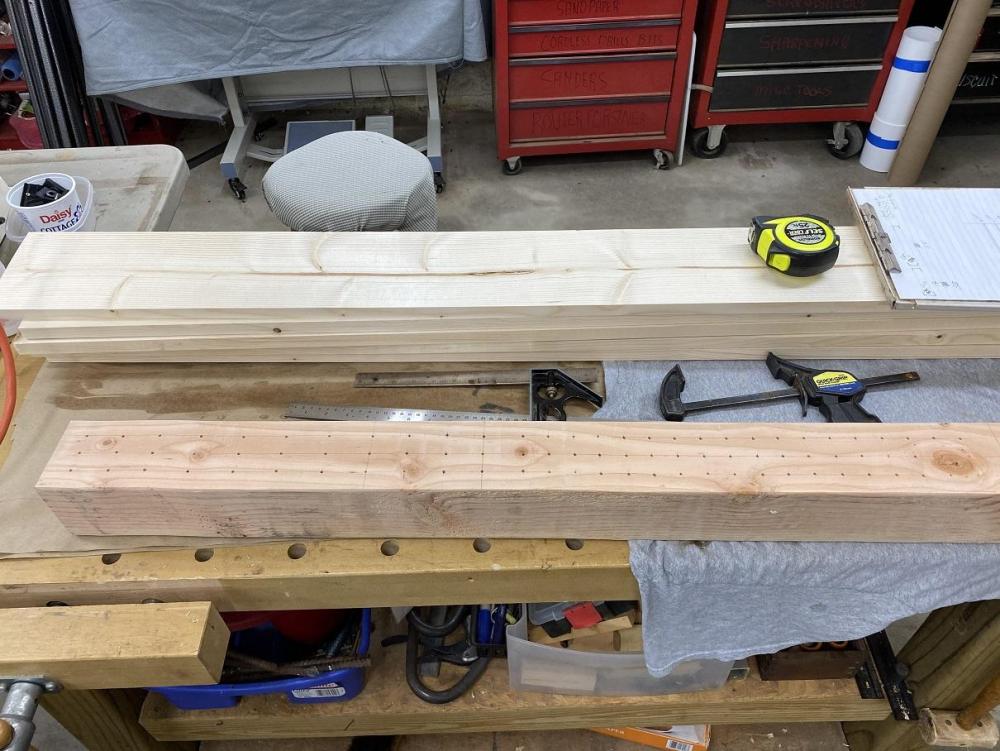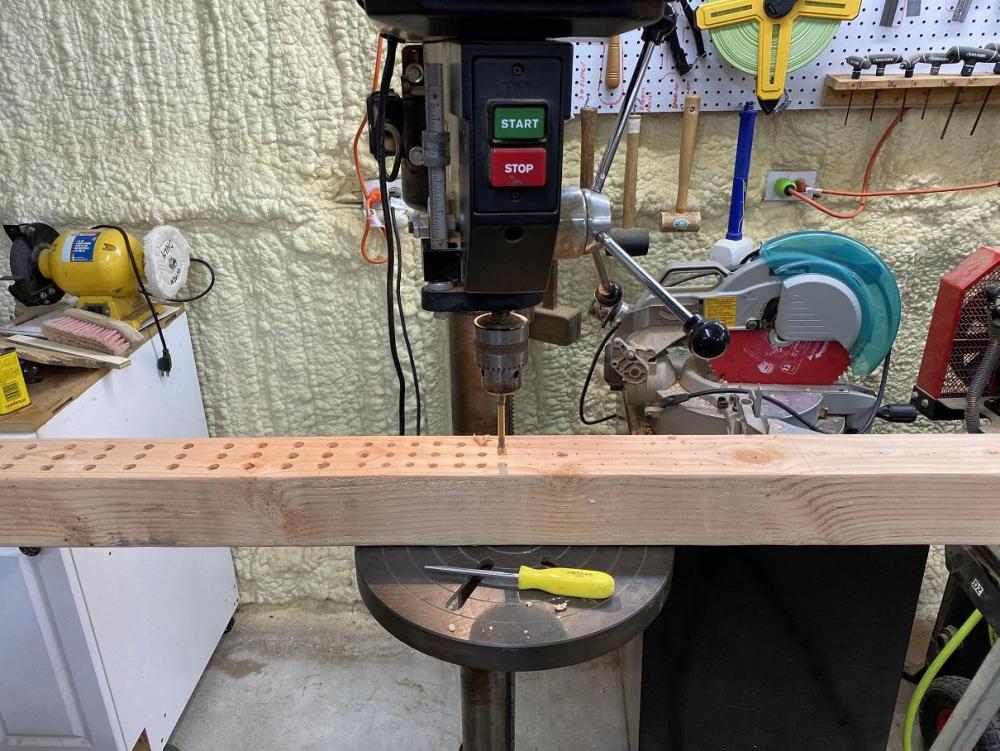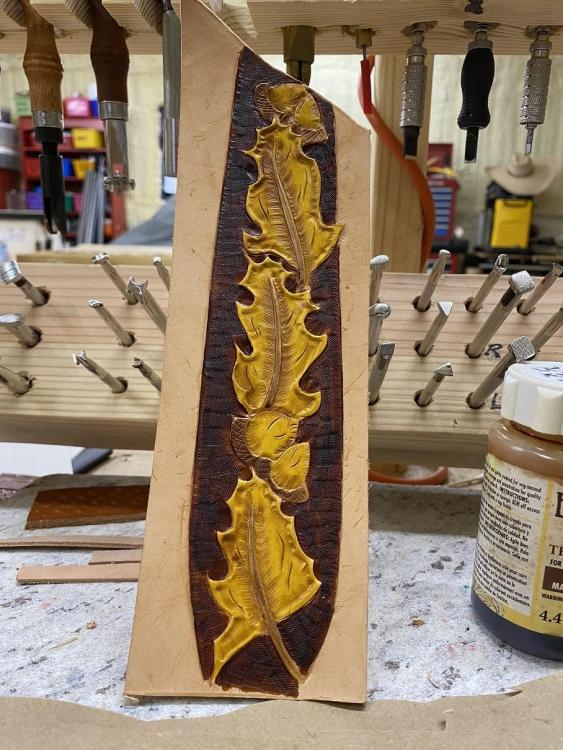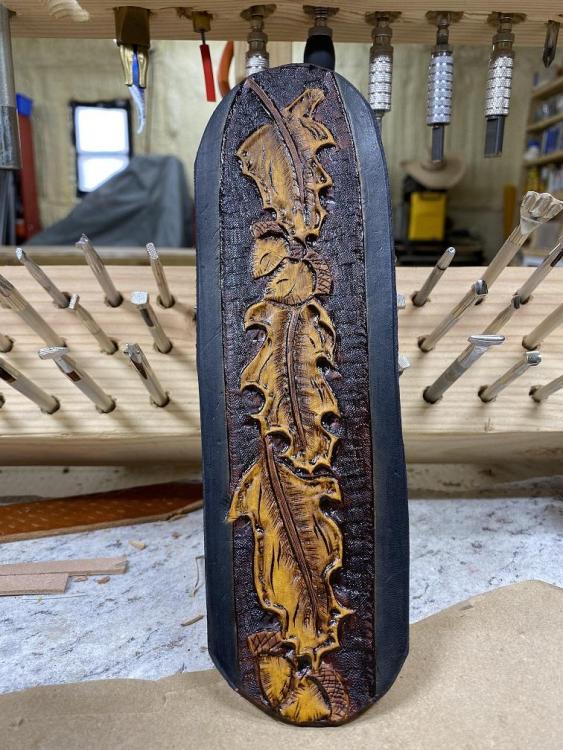-
Posts
573 -
Joined
-
Last visited
Content Type
Profiles
Forums
Events
Blogs
Gallery
Everything posted by Brokenolmarine
-

Outgrew my shelf unit, Build Along
Brokenolmarine replied to Brokenolmarine's topic in Leatherwork Conversation
I need a bigger shop but won't build one. When we moved from Virgina to Oklahoma I had JUST built a custom workshop with everything just so. I had a custom builder come in and build it just the way I wanted. Heavily insulated, 10' walls and perfectly lit. Plugs around the walls at 4', every eight feet, windows HIGH up the walls for light but the wrong folks couldn't see in. Climate controlled, finished interior and bright white walls to reflect the light. Then, the pockets of democratic voters put a bought politician in office and we moved out. HE paid back the billionaire who bought his governership by giving away the state. I regretted walking away from that new shop and my few good friends... but .... -

I W B Work in progress holster
Brokenolmarine replied to Bert03241's topic in Gun Holsters, Rifle Slings and Knife Sheathes
The color looks great, even and smooth. I'll get there eventually. -
Actually, I forgot to add the rod to the design, maybe later. I'll have to find a six foot one. LOL. But here is the new updated, wider model, I finished this morning. This one is taller than the old one pictured above by a foot, wider by a foot, and has much more room. Has slots in the tool bar for the mallets, and the shelves are deeper and spaced better.
-

Outgrew my shelf unit, Build Along
Brokenolmarine replied to Brokenolmarine's topic in Leatherwork Conversation
Last view, of the side. Note that I am so anal I countersunk and plugged the holes, then sanded the plugs flush. The wife always laughs at me for this kinda stuff, but when SHE sews, quilts, or crochets, she's just as bad. If I was to stain this; those plugs would POP! I put a screw in this side to hang the Optivisor and one on the other end to hang the leather strop for sharpening the cutting tools. This will help keep the desktop clear. -

Outgrew my shelf unit, Build Along
Brokenolmarine replied to Brokenolmarine's topic in Leatherwork Conversation
Went out this morning after all the glue had a chance to cure, and sanded down the glue lines and squeeze out. I sanded all the plugs flush. Sanded away any pencil marks I might have missed. This is a working shelf and I don't plan to put a finish on it at this time, but I didn't (CAN'T) just throw it together. I want it to look halfway decent. I cleared off the leather working bench and set it in place and then for Safety's sake I had figured out how to secure it. I cut a jointer plate in half and screwed both sides to the bench top. Now, it shouldn't be able to slide sideways, NOR tip over forward or back. If I ever decide to use the table for another application, I can fill the holes and touch them up with oak stain, they will barely be noticeable. Here is a front view of the shelf, EMPTY.... Here is a view of the shelf loaded up. Hey, always happy to share, it's how we learn. Check the website, they say how the head is attached. -

Outgrew my shelf unit, Build Along
Brokenolmarine replied to Brokenolmarine's topic in Leatherwork Conversation
I looked it up, and I was pretty sure it came from Lee Valley Tools. https://www.leevalley.com/en-us/shop/tools/hand-tools/mallets/110896-veritas-journeymans-brass-mallets I have had mine for more than a decade, maybe two, and used it a lot. It's still a handy little tool, great for setting small nails and center punching. I use it a lot when making presentation boxes and the like. Here is a closer look. I felt it was worth every penny. -

Outgrew my shelf unit, Build Along
Brokenolmarine replied to Brokenolmarine's topic in Leatherwork Conversation
It's a woodworking mallet, I think it came from either Lee Valley or Woodcraft. When I go out to the shop this morning I'll check to see if the brand logo is still readable. It was purchased years ago just for setting center punches or seating nails on fine woodwork. -

Outgrew my shelf unit, Build Along
Brokenolmarine replied to Brokenolmarine's topic in Leatherwork Conversation
Careful assembly was begun. First glue was applied to the ends of the 4x4 block that IS the toolbar. Using 1,2,3 blocks to raise the angled 4x4 into position and the wife to help stabilize the sides, we slowly screwed the tool bar into place, then put a band clamp around that first assembly to help the screws pull it tight. Next, using a neat assembly cheat, I placed two wood bars at the next shelf level and clamped them in place, and glue was applied to the ends of that shelf. It was laid on the wooden bars, set flush with the front of the shelf and screwed into place. Repeating this process saw the shelf unit assembled. When it was assembled and left for the glue to set with band clamps in place, it was Nearly Done. What remained was to figure out how to put either back panels or rails on the back of the two upper shelves to keep supplies from falling out the back. I "Thought" I had a sheet of Luanne left. I took a break then came back out and ripped the replaced shelf down both sides... getting the lumber to make the shelf rails. Both rails were glued on the ends. The lower shelf was glued along the bottom and clamped The upper shelf is floating, and was pinned and glued. All that is left to do now is to sand the plugs that were installed to remove any glue and insure they are flush. It will also remove any stray pencil marks, basically the shelf is done. I'll post one more pic from the front empty, then with the tools and supplies in place. -

Outgrew my shelf unit, Build Along
Brokenolmarine replied to Brokenolmarine's topic in Leatherwork Conversation
With the basic pieces done, I needed to drill the countersunk holes for the shelves in the sides of the unit. careful layout and a forstner bit for the countersink and that was knocked out. No step was rushed. The layout. Center punch the marks Next drilled the pilot hole for the screws and then the countersink for the plugs. -

Outgrew my shelf unit, Build Along
Brokenolmarine replied to Brokenolmarine's topic in Leatherwork Conversation
I went back out after all the work and decided I wasn't happy with the second shelf with the holes and hanging slots. Too much time and effort had gone in the build so far to settle, and when I was routing, I had already broken one of the "Teeth" of the slots off and had pinned and glued it back in place. The job was so well done you couldn't tell, but... I decided to redo that second shelf with some changes to the layout. To strengthen the teeth, I would widen the spacing from 1-1/2" between the centers to 2" I had also checked the usability of the original layout, and discovered I didn't need as many of the 7/8" holes. I marked more points for 3/4" holes, fewer 7/8" holes and only the one 1-1/4" hole. The layout was completed, and I centerpunched the holes. Next, I took to the drill press. I suspected that one of the reasons I had broken off a tooth, was that the forstner bits tended to break out wood on the back of these boards even with the backers, I first drilled pilot holes all the way thru, then set the press to drill slightly over halfway thru on the first passes on the front, then flipped the board and drilled the rest of the way thru. Worked perfectly, clean passes on all. The next step was to mark and cut the slots, route the edges and the interior of the slots and drop holes, and then sand the shelf. Looking good. -

Outgrew my shelf unit, Build Along
Brokenolmarine replied to Brokenolmarine's topic in Leatherwork Conversation
Got back at it and knocked out the extra shelves. Got all the edges routed and was ready to start on the sanding. First I matched up the edges on the two sides and marked the location of the shelves. Prior to beginning the sanding, I set up the homemade downdraft sanding table. I made this years ago, and I have used it often. I hook the dust collector to the end and sand ON the downdraft. It reduces the dust by 95%. I love this thing. Tomorrow morning I will check the various aspects of the shelves, make sure the tools fit the slots, the holes, etc. Then I will drill the pilot holes and countersinks for the screws... Boom, we'll be go for assembly. -

Outgrew my shelf unit, Build Along
Brokenolmarine replied to Brokenolmarine's topic in Leatherwork Conversation
Afternoon session let me route the sides and the inside of the holes of the shelf, and also knock out routing the edges of the tool bar while I was at it. I have NOT fine sanded the shelves and may not. A pass or two before assembly but this will be a working rack and I'm not planning on putting a finish on it. I routed the edges to knock the sharpness off them, and to ease the movement in with the tools. Next step on this one was to cut the slots and route those cuts. I cut all but THREE of the marked slots, deciding that I wouldn't use as many slots as I would the drops in the future. Next steps involve making the additional shelves for storage of dyes, paints and finishes; and the side panels. Then a couple passes with the sander to remove splinters. I will also ADD the rack for the letter and 3D stamps. -

Outgrew my shelf unit, Build Along
Brokenolmarine replied to Brokenolmarine's topic in Leatherwork Conversation
Now that I have all the holes drilled, I'll mark the lines to open the 3/4" holes into hanging slots as the next step when I go back out. Once that is done, it will be time to move to router work. I'll route the edges of the slots, and the inside of each of these holes. I'll save that to the end, just before assembly, as I'll route all the edges of the shelves and the edges of the sides, for aesthetics Much more to come... hang with me if you are interested. -

Outgrew my shelf unit, Build Along
Brokenolmarine replied to Brokenolmarine's topic in Leatherwork Conversation
Got out this morning and started on the second shelf. This one, like the old one, will hold the tools that hang by the handles or drop in the holes, like the swivel knives, the bevels, and the stitch groovers, etc. I marked a center line first, then marked the spacing for the 3/4" holes, the 1" holes and the 1-1/4" holes. Once I had the spacing marked in pencil, once again I got busy with the centering punch and mallet. Careful punching of the holes insures that the forstner bits will cut in the correct location and give me a nice line when all the holes are drilled. I noted the location to change bit sizes ON the line, as the bit will cut away the notations. Once all the guide holes were punched, once again it was time to move to the press. -

Outgrew my shelf unit, Build Along
Brokenolmarine replied to Brokenolmarine's topic in Leatherwork Conversation
I had to spread the work on the tool bar out over the day. A man has to know his limitations. But, I got the holes drilled. I'll use a countersink to round the edges of the top of all the holes later. The next step will be to make the new second shelf, cutting the slots and drop holes for tools in the new wider shelf. The tool bar looks pretty good for an old man... Here is a look at the progress so far... more tomorrow if I'm not too beat up and have to rest for a day. -

Outgrew my shelf unit, Build Along
Brokenolmarine replied to Brokenolmarine's topic in Leatherwork Conversation
I spent several days playing with layouts, then finally went to Home Depot and bought the wood. Today, I cut the cedar 4x4 to length at 50-1/2 inches, allowing for the side panels which will make it 52" when assembled, the width of the table. Then I began to lay out the hole positions. Increasing the number of holes for both the thick shaft stamps and the thinner stamps. With the extra length I took my time and finally laid them all out in pencil. Once I got them all laid out in pencil and was satisfied with the positions, I used a center punch to set the positions. I was going to drill them with forstner bits on the drill press but didn't want to struggle once I started looking for pencil marks. The punch also made sure positioning easier. I drilled 33 holes on the left with a 1/2" bit, then dropped down to 3/8 for the remaining holes on the right. the last five single line holes were drilled with 1-1/4 (4) and 1-1/2 (1) to accommodate the handle sizes of the mallets and shoemaker's hammer. -
Some of you may remember the old shelf I built and expanded a year or so ago. I have begun to outgrow it. I also use a table that moves. UP and Down and rolls around the shop if needed. I want to anchor the next shelf to the table without damaging the table, so after some thought, I decided not to go a LOT higher, and wider was the choice. This gave me several advantages. Here is the old shelf unit. This unit is about 36" wide and 24" tall and currently accommodates my most used tools, but as I added tools I found that some wouldn't fit the slots I had, and some just didn't have slots available. I didn't have space for the mallets, and the drawers in the work table are full. I will go wider, to the full width of the table, and up to 36". I played around with various designs, and came back around to the same concept, just an extra shelf at the top for more storage. Being wider I could add space for the mallets and lots more stamps in the tool bar, then more slots for additional tools in the second shelf.
-
Looks pretty good to me.
- 10 replies
-
I give it a closer look and see if I want to add it to the library next go round. You can never have too many references.
-
I'll try that, but I think I'm not getting it wet enough to start with, then letting it dry more. Sometimes the stamps, or beveling just don't go very deep. I think that just comes with experience.
-

Quick sheath for a buddy
Brokenolmarine replied to Garyak's topic in Gun Holsters, Rifle Slings and Knife Sheathes
The sheath looks almost like a surfboard to me. Hang ten bro.... Good job. -

Sling for the Ranch Rifle
Brokenolmarine replied to Brokenolmarine's topic in Gun Holsters, Rifle Slings and Knife Sheathes
Oops, sold. Thanks for thinking of me, but the funny thing, by the time the bidding ended, they paid as much as a new set, with shipping. Since I have a complete woodshop, and after looking at the prices... I think I'll make each one of my loop irons out of hardwood as I need each size from Walnut or oak. I have plenty of both and being retired, I also have plenty of time to get them right. -
The dye in this pic is Dark Brown, but you'll note that at the bottom I don't have the edge properly defined and the dark brown bled as noted in the OPs initial post. The edge on the sides here were sharply defined by the cut and the bevel. I painted the dye up to the edge with a fine artist's brush, then up to the leaves the same way. Nice defined break in the colors. After first pass the dark brown was blotched and uneven, because I didn't try and overload the color forcing it to bleed. After the second pass it darkened it up nicely. This was just a practice panel for MY sling, but I try to do each practice piece as realistically as I can, and even when I make errors, or fail with colors I still try to complete them if possible, as there are still lessons to be learned. In this panel, I corrected errors I made, and took it to the end. Turned out fairly nice, and I was able to decide my design plan for the sling would work. For the edges on the practice panel I used black. I used three coats of dye, taking the black to the edges where the cut kept the black from bleeding. I was careful with the artist's fine brush to go TO the edge but no further. The first coat I took my time and defined the border and didn't worry about a dark black for the rest of the natural leather just got the first pass of black dye on the leather. The second and third coats I made sure I didn't dye the leaves that lay over the edge and didn't slip into the brown background. Three coats did it.. I hope this helps. I am still learning myself, but I use every trick I can come up with to help me make my work look better. I am always open to suggestions.
-
When I put a black border on things, I cut a line with my swivel knife and then a nice sharp bevel. This leaves a defined edge for the dye. I apply the dye with a detail paint brush and paint it to the edge. I might have to make two or three passes, allowing the dye to dry completely prior to making the next pass, before getting to the "Black" that I want, but it prevents the bleeding you've seen. Or it has for me. so far. You can skip the bevel if it would be obvious, but the cut line will make a huge difference. It can be very fine.
-

Sling for the Ranch Rifle
Brokenolmarine replied to Brokenolmarine's topic in Gun Holsters, Rifle Slings and Knife Sheathes
Thanks very much for the input, never seen that technique before. I have learned ALL my leatherworking from YouTube or a few books I have found on line or in secondhand shops. I appreciate the suggestion. I'll try the technique as practice. What is the metal bar called that you squared your loop on? I just made a form using scraps from the actual strap cutoffs from the sling. LOL.



